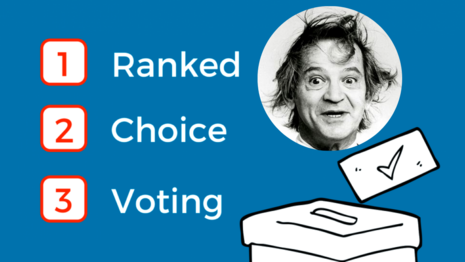 Ranked Choice Voting has been the subject of much controversy especially this year. Many Republicans have charged that such a system favors the Democrats. Ironically it is the liberal Politico that seems to have accidentally validated that charge.
Ranked Choice Voting has been the subject of much controversy especially this year. Many Republicans have charged that such a system favors the Democrats. Ironically it is the liberal Politico that seems to have accidentally validated that charge.
On Wednesday Politico published a story by Steve Shepard about Republican candidates surging in the midterm election polls, "A slate of races now lean Republican in our latest forecast update." The story begins with a report on how the Red Wave in that election is beginning to look much more likely:
The GOP is tantalizingly close to its goal of taking the House majority in three weeks, after an at-times-uneven, two-year campaign to flip the chamber.
POLITICO’s Election Forecast still rates the race to control the House as “Likely Republican” — but of the dozen newest updates, 10 individual contests moved in Republicans’ direction.
Two new races are moving into the “Toss Up” column, both in districts President Joe Biden carried by double digits in 2020. One of the two new toss-ups is in Oregon, where Democrats are struggling up and down the ticket.
Ah, but amidst this possible Red Wave there is one bright spot for the Democrats in the Red State of Alaska.
There are still some bright spots on the map for Democrats, including Alaska, where the state’s lone House seat is now rated “Lean Democratic” after now-Rep. Mary Peltola’s surprise special-election victory this summer.
...Peltola’s victory in the August special election might have looked like a fluke. But the smart money is on history repeating.
Her rematch against Republicans Sarah Palin and Nick Begich moves from “Toss Up” to “Lean Democratic,” as the same dynamics present in that summer upset are back. Palin and Begich haven’t made nice — while Peltola has built a formidable war chest ($2.3 million in cash on hand as of Sept. 30) and has the sheen of a winner, at least for the time being.
It would be surprising to see either GOP candidate win another ranked-choice tabulation, if Peltola falls short of a majority on Election Day.
So in the middle of what Politico reports as looking like a Red Wave election, the Democrats are likely to keep a Congressional seat in a Red State that they won earlier and will do so probably again due to Ranked Choice Voting.
Since Nevada's voters are being asked whether or not to approve using Ranked Choice Voting in the November election, the Nevada Current explains how that system works which makes it sound so convoluted that you could be forgiven if you think that Professor Irwin Corey authored the article.
Here’s how the proposed system would work: All candidates, regardless of their political party, would appear on the primary ballot in June. The top five finishers would move on to appear on the general election ballot in November.
On that general election ballot, voters would rank the five candidates — number one pick, second pick, etc. If one candidate receives more than 50% of first-choice votes, they are declared the winner. If not, the candidate in last place is eliminated, and those votes are transferred to their second-choice candidate. That process is continued until a candidate receives a true majority.
The system might seem confusing but as Politico accidentally revealed the result could be very desirable for a certain party even if that party is the one at risk of losing big in straightforward normal elections.




